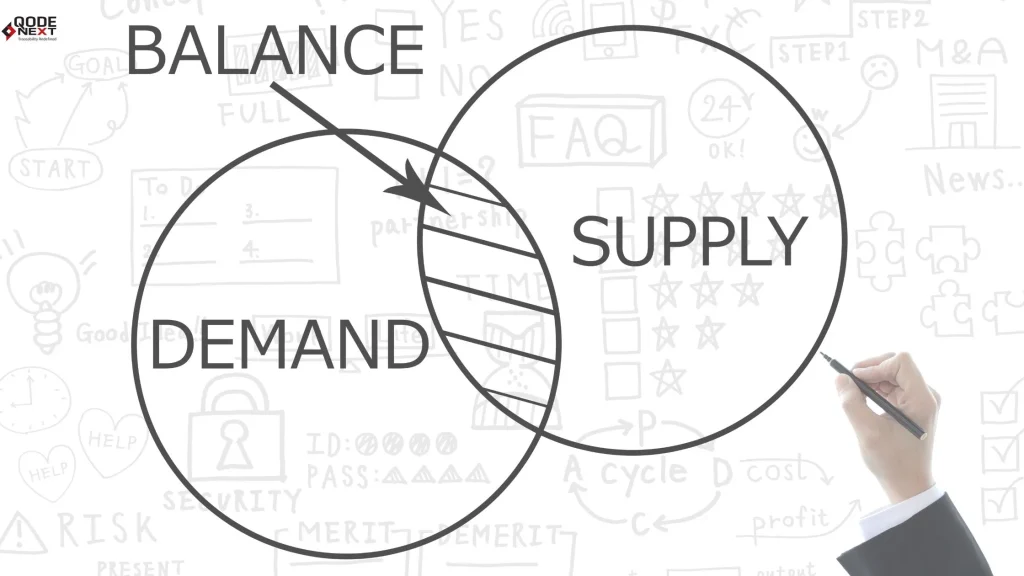Demand volatility can be a major challenge for businesses. It can lead to overstocking, understocking, and lost sales. But what is it?
This phenomenon refers to the degree to which the customer demand for a product or service can vary over some time. This could be the timing of the demand or how unpredictable and sudden it is.
Given its nature, this type of surge in demand can put a lot of pressure on supply chains and warehouses. Therefore, businesses need to be prepared to deal with such volatility.
Here are thirteen effective strategies that can help alleviate the surge in demand.

13 Strategies for Dealing with Demand Volatility
Demand volatility can disrupt your business, causing irreparable damage to your finances and supply chains. Here are some of the ways you can be ready to prepare for it, should you face it:
1.What-If Cases
Planning scenarios in a what-if case is a good way to prepare for unknown situations. With it, you can test the effects of the changes without disrupting the schedule. By modelling the impact of inventory level and production schedule changes on key performance indicators (KPIs), you can proactively adapt to shifting market conditions and optimize your operations.
2. Forecasting
While ideal manufacturing operations anticipate customer demand, accurate forecasting can be elusive, especially in volatile markets. One approach is to analyze past demand volatility and forecasts to assess Forecast Accuracy and identify potential improvements in your forecasting methodology.
3. Adjust the Planning Horizon
You can use this demand volatility method to manage volatile demands in the market during uncertain times. With so many changes each day, it might be helpful to shorten the span of the planning horizon. This will allow you to update your production more frequently. So, you will be easily able to respond to those changes.
4. Alerts
Visibility is a key factor in the supply chain. Set alerts with planners and schedulers when the inventory levels are emptying up. It ensures to refill them to keep the demand-supply levels stable.
5. Supply Chain Management
You need an agile supply chain if you want to handle demand fluctuations. To fix such demand volatility, you need a flexible process that quickly responds to the changing demand patterns.
With strategies like demand-driven replenishment, dynamic inventory allocation, and flexible production capabilities, businesses can adjust their operations in real time.
6. Scalable Planning
Another benefit of managing demand fluctuations is how you can adapt and scale the planning process. By reducing the mandatory time for developing and aligning supply chain plans, companies can make strategic decisions thanks to updated data, promptly distribute forecasts, and apply them to all product levels.
Such agility in planning is extremely valuable in cases of daily disruptions as it allows for more frequent production updates.
7. Global Demand Volatility
Our world is becoming a global village with more interdependencies. When there’s an event in one part of the world, it does affect multiple other countries. Take, for example, Brexit, which affected trade and businesses worldwide.
Even the COVID-19 pandemic madethe global trade and supply chains stall their functions. Such unpredictable shifts in consumer demand across international markets can disrupt supply chains, affect pricing, and challenge companies to adapt quickly.
That’s why there’s a need for agile planning, responsive strategies, and market insights.
8. Triple P: People, Planet and Profit Requirements
Other than having a healthy topline and bottom line, companies today feel the increased pressure of reducing their carbon footprint. Consumers today don’t prefer profitable corporations. Companies that invest in green supply chains and are transparent about how they produce and transport their products are more popular with the public.
That is why many companies are making their production and supply lines more transparent and showcasing that to their customers. Also, companies outright state which of the 17 United Nations SDGs (Sustainable Development Goals) they comply with.
A company’s social and environmental impact reflects the combined footprints of its suppliers and customers. Actively managing and minimising this shared footprint throughout the value chain requires a holistic approach.
According to some sustainability and business thought leaders, the concept of a “value chain” should evolve from a linear model to a more circular “value cycle,” emphasising waste reduction or even elimination.
To effectively monitor, control, and report supply and demand within this cycle, companies must enhance their demand planning and sensing capabilities.
9. Cross-Functional Demand Planning
This trend is now moving in a direction that has a more holistic perspective when it comes to demand planning. The demand planning process at various companies is very siloed. Usually, in such cases, the teams are focused on achieving those numbers as per their designated departments.
Demand planners need to see themselves as part of the entire business and plan for the whole organisation. For many organisations, developing cross-functional demand planning is quite a challenge. This helps to reduce demand volatility in supply chain management.
The teams and business units often do not share their plans. Therefore, all teams need a central database for better communication and efficiency. It’s crucial to break down the information in silos so all teams have the same data. You can do this with the latest employee management and business data platforms.
10. Multiple Forecasting Methods
Avoid relying on a single forecasting technique; instead, combine methods like moving averages, exponential smoothing, and scenario planning to capture a fuller view of potential demand shifts.
11. Real-time Data Integration
Use real-time data from sources such as point-of-sale systems, social media trends, and industry reports to adapt forecasts as conditions change.
12. Collaborative Planning
Engage in close collaboration with suppliers and distributors to share demand data and insights. This teamwork enables early identification of potential disruptions, allowing for timely forecast adjustments.
13. Diversification
Broaden your supplier base to minimise dependence on any one source, helping ensure continued production even if one supplier faces a disruption.
FAQs:13 Strategies and Trends to Deal with Demand Volatility
How to do the demand volatility calculation?
Analyse the historical demand to find the standard deviation. Next, divide it by the mean demand and multiply it by 100. Now you will have the volatility percentage.
What are the factors affecting volatility for demand?
Several factors affect volatility, including seasonal trends, economic shifts, and consumer preferences. Some other factors include competition, supply chain disruptions, and external events like natural disasters or geopolitical issues.
What are some of the best practices for demand planning?
You can make use of multiple forecasting methods, integrate real-time data, collaborate with supply chain partners, and diversify suppliers. These will make your supply chains more resilient and strengthen against demand fluctuations.
Conclusion
Effectively managing demand volatility is a key step for businesses. This will help them to thrive in today’s competition. With data-driven insights and advanced technologies, companies can enhance their forecasting accuracy, optimize inventory levels, and improve customer satisfaction. If you want to take your demand management and supply chain optimization to the next level, Qodenext is here to be your partner. Contact us and see how our innovative supply chain management solutions help you navigate demand fluctuations and achieve sustainable growth.






